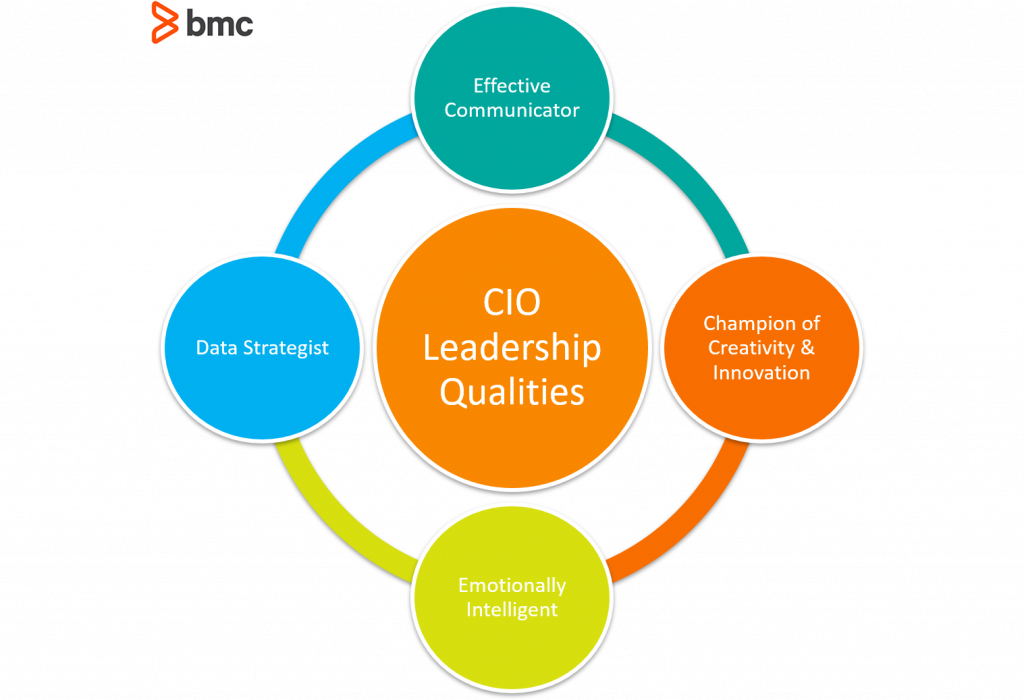The role of a Chief Information Officer (CIO) was once understood to be that of an executive focused mainly on IT. Now that technology is an essential component for companies both great and small, the role has been evolving. All organizations rely on IT, whether they are multi-national conglomerates, small family businesses, or municipal holdings such as schools or libraries. Technology is integral to maintaining daily operations; it is no longer a niche contained within tech start-ups or software companies.
In the current climate, CIOs are not only tasked with leading technological initiatives, but are integral, valuable participants at the top of the organizational ladder. In addition to being knowledgeable and strategic in the tech space, it is vital for a CIO be a proficient businessperson. Successful CIOs must balance the goals and objectives of an organization while also making sure their teams remain supported, motivated, happy, and successful. CIOs are called upon to be decision makers, leaders, and anticipators.
Not to be confused with the Chief Technology Officer (CTO), the CIO’s focus is on streamlining operations: increasing efficiency, productivity, and adapting to changes as they come. You’ll need to be aware of needs and pain points and able to direct your teams to anticipate and react to those needs. As CIO, you’re an invaluable member of the C-suite, as you’re as a cross-functional leader and conduit between departments.
While everyone has their own distinct management styles, here are the four essential qualities for any CIO to possess:

1. Be an Effective Communicator
Communication skills are vital for any manager, but this is especially true for the CIO. This role is simultaneously responsible for leading their own teams as well as facilitating dialogue between multiple parties across the organization.
As a CIO, you must be able to effectively exchange information with those who report to you. This includes:
- Clearly and succinctly explaining the scope of a project
- Outlining business goals and objectives
- Adequately handling miscommunications
A CIO must be comfortable tackling difficult or sensitive topics as they come up; avoiding these conversations does a disservice to the whole team.
A leader who remains approachable will experience a more robust and, ultimately, successful relationship with their team, which will also keep them informed on what’s going on in those departments. Transparency between the CIO and the rest of the team makes it much easier to communicate with other departments in the organization.
Another vital component of the CIO’s skill set is the ability to convey how the work of their team connects to the overall needs of the business. The CIO acts as the conduit between the executives in the C-suite and their team members on the frontlines. It is the CIO’s responsibility to take the interests of various stakeholders into consideration and make sure all parties feel heard.
2. Be a Champion of Creativity and Innovation
It is no secret that technology evolves daily. CIOs need not only anticipate advances in technology, but stay flexible and ready to respond to new developments at a moment’s notice. The willingness to take risks and embrace new ideas is imperative for the health of the entire organization, and a leader who embodies these qualities will inspire team members to do the same.
As CIO, it is vital that you promote a culture of innovation from day one. Furthermore, you need both to manage the response to external change and to lead it by being the catalysts for change yourself. This sort of forward thinking prevents stagnation and, worse, being outpaced by competitors.
Now, more than ever, it is crucial that a CIO be a disrupter. You need to be ahead of the game and versatile in the face of unexpected adjustments. Simultaneously, a CIO should be supporting current and future business demands. You cannot be risk-averse, as embracing risk is the way to true innovation.
3. Be Emotionally Intelligent
Once considered a soft skill, emotional intelligence is front and center in discussions regarding competent managers. It is very difficult to manage a team if one is unable to recognize and, ultimately, appreciate the differences between staff members. A true leader understands that each colleague has unique strengths and areas for improvement, and is able to use these to the team’s advantage.
Emotional intelligence is a much more important component in a CIO’s toolbox today than it was even a decade ago. Whereas CIOs of the past favored a “command and control” leadership style, these days “guide and support” is proving to be more successful, especially when it comes to fostering inspiration and innovation. It is imperative for executives to be self-aware while also understanding their people and how to respond to their needs. A good CIO provides direction while empowering others.
Instead of micromanaging or trying to control every aspect of operations, the best CIOs trust their teams, acknowledging that since they deal with changes and updates in real time, they may have more intimate knowledge of the inner workings of each system. In this role, it is just as important to display cultural competence as it is competence in technology or business.
4. Be a Data Strategist
Data can be a powerful tool in informing best practices and business operations. A CIO needs to understand each step in the data collection process so they can better lead their team and make sure the right people are collecting and synthesizing the data. If a CIO provides this crucial support to data scientists, data from all facets of the organization can be utilized to inform decisions and inspire growth.
While it is important for CIOs to be willing to meet risks head-on, they need to be able to utilize data to calculate exactly how risky a move will be. Data does nothing as an entity on its own, it needs people trained to appropriately analyze it and draw the proper conclusions, turning those findings into something actionable and informative. A CIO needs to understand both where data comes from and how to use it.
No longer solely relegated to the tech space, today’s CIOs must wear multiple hats. In addition to managing and optimizing IT teams, a successful CIO must maintain a head for business, improving the customer experience by streamlining operations and staying on top of new technological developments. Furthermore, they must be consistent and transparent communicators, appreciating the nuances of their teams while clearly and succinctly transmitting information to and from the rest of the organization. The CIO must both anticipate and encourage change, propelling their organization forward.







